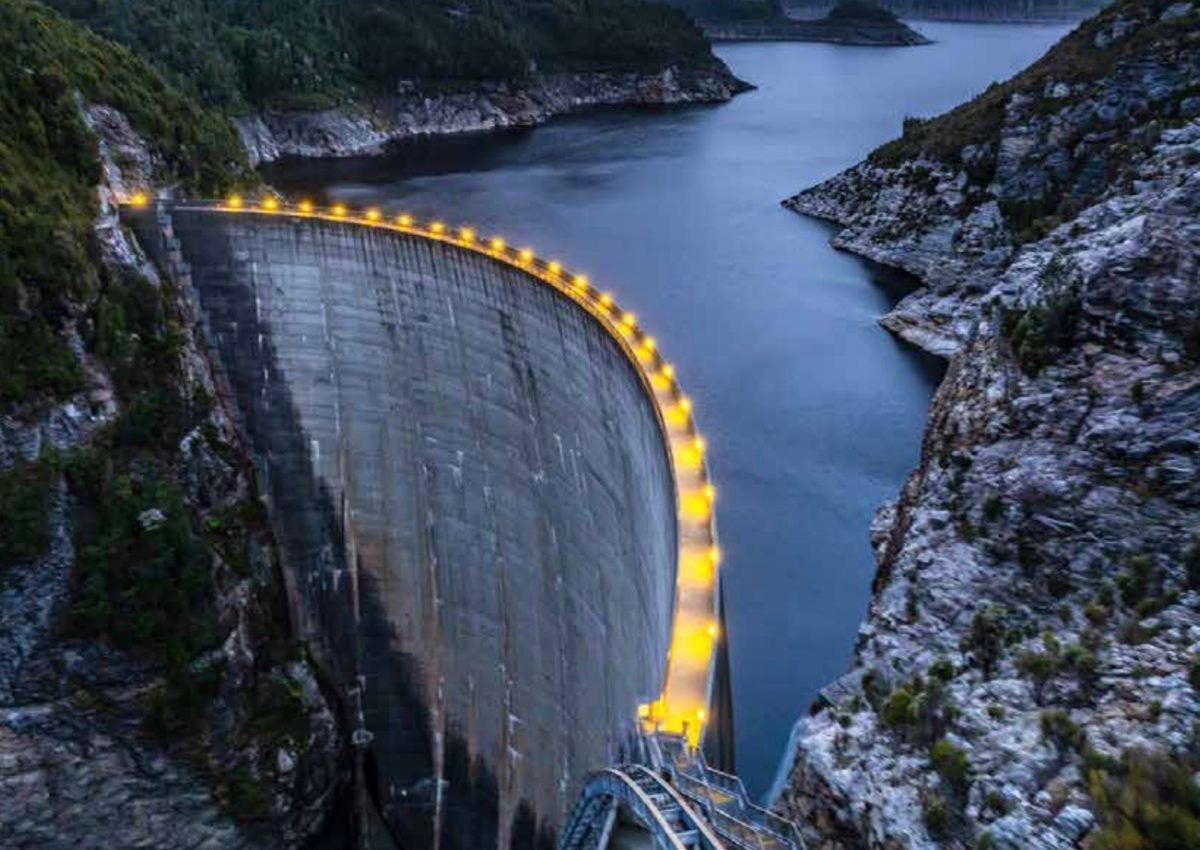The Tasmanian government has outlined its vision and suite of actions to develop renewable energy generation in the state over the coming 20 years, stressing there has never been a more important time to manage the transition to renewable energy so as to help the economy recover from the Covid-19 blow.
Tasmania is on track to be self-sufficient in renewables by 2022, making it the first state in Australia with 100% renewable power generation. But the island state knows it is well placed to pursue a much more ambitious goal, which would see it double its renewable production by 2040 and help mainland Australia reduce its emissions.
After it unveiled the eye-watering renewable energy target of 200% by 2040 in March, the state government has now released a draft Renewable Energy Action Plan to help manage the energy transition pathway. “The Renewable Energy Action Plan will establish the platform to transform Tasmania from being Australia’s renewable energy powerhouse into a world leading provider of clean, reliable and affordable energy,” Guy Barnett, Tasmanian Minister for Energy, said.
The 200% renewable energy pledge, which is unheard of in Australia and globally, means that Tasmania will effectively double its output of renewable energy from around 10,500 GWh a year, based on the current assumptions for 2022, to 21,000 GWh by 2040. As part of this pathway, the government has also set an interim target of 15,750 GWh per year, or 150% renewables, by 2030.
The target is expected to create thousands of new jobs and realize up to $7 billion of new investment in the renewables sector by 2030. With the RET is expected to be legislated later this year, Minister Barnett underlines that “there has never been a more important time” to transition to renewables.
“As a result of Covid-19, there are unprecedented challenges facing Australian households and industries. By seizing Tasmania’s immense potential, renewable energy can grow our economy, attract investment, create jobs and support Australia’s transition to renewable supply,” Barnett said. “Tasmania aspires to lead the way as a region for new and expanded industrial developments on-shore – where manufacturing, commercial and industrial operations can directly access our low cost, reliable and clean electricity resources.”
Major projects
The draft proposes the establishment of a new body, Renewables Tasmania, to better plan, coordinate and promote the development of renewable energy in the state, as well as deliver transparent regulation of the Tasmanian energy sector. Its goal will be to grow Tasmania’s renewable energy ‘brand’ nationally and globally.
Tasmania’s renewable energy sector is currently undergoing a period of unprecedented expansion and growth. Its future, as laid out in the draft action plan, is largely focused on Tasmania’s ambition to tap its deep storage potential through nationally significant projects such as Project Marinus, which is a 1,500 MW second undersea interconnector that would help deliver renewable energy from Tasmania to Victoria to help stabilize the national grid, and Battery of the Nation, which seeks to utilize the state’s advantage in pumped hydro storage to help free up the bunged-up pipeline of solar and wind in Victoria.
The total economic contribution to Tasmania from Project Marinus, Battery of the Nation, and broader renewable investment is estimated to be up to $7.1 billion. This investment can lead to up to 1400 Tasmanian jobs during peak construction and unlock up to 2350 jobs from broader renewable energy projects.
In addition, there has been a major expansion in wind farm investment, as well as opportunities to develop a renewable hydrogen industry in Tasmania, which has led to the government’s recent announcement of a $50 million investment package toward its green hydrogen ambitions over the next 10 years. The state currently has three operating wind farms and two more going through their commissioning phase.
There are 10 more renewable projects, predominately wind, at various stages of planning with the potential to provide billions of dollars of regional investment and significant construction and ongoing employment. Increased solar generation is another potential growth area, the document states, adding that the number of households installing photovoltaic generation units has increased year on year and the uptake of solar by Tasmanians continues to grow.
There are also proposals for two solar farms in the North of the state. The state’s largest solar project – the 12.5 MW Wesley Solar Farm – was given the green light in 2018 but was not heard of since. The project was proposed by renewables developer Epuron, which previously secured approval for another big project – the 5 MW George Town Solar, which has not been commissioned to date.
“Solar is one of the main sources of renewable energy across the world and despite hydro and wind generation being historically more common sources of power in Tasmania, the government welcomes all forms of renewable energy technology and will embrace options for solar projects as it builds towards the Tasmanian Renewable Energy Target in 2040,” the document states.
Consultation on the Action Plan will be open for a four month period with submissions due by 11 September 2020.
This content is protected by copyright and may not be reused. If you want to cooperate with us and would like to reuse some of our content, please contact: editors@pv-magazine.com.









“Tasmania is on track to be self-sufficient in renewables by 2022, making it the first state in Australia with 100% renewable power generation. But the island state knows it is well placed to pursue a much more ambitious goal, which would see it double its renewable production by 2040 and help mainland Australia reduce its emissions.”
More countries need to pay attention to what’s been planned here. It’s also very interesting that by 2022 the plan is to be 100% renewables. Many are almost breaking their arms patting themselves on the back for a “mandate” of 100% renewable by 2050. LOL